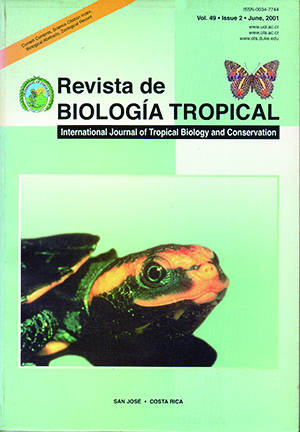Abstract
The zooplankton community structure, including copepods, euphausiids, chaetognaths, and decapod larvae, was monitored during six circadian cycles using Bongo net (500 µm mesh net) samples from Bahía Magdalena, on the southwest coast of Baja California, México. Samples were obtained during three oceanographic surveys (March, July, and December 1996) to describe the changes in the zooplankton community structure throughout the main mouth of Bahía Magdalena. The zooplankton community structure showed strong changes with a close relation to environmental conditions. During March, a well-mixed water column with low temperature and salinity indicated an influence of the California Current water and local upwelling processes. During July, temperature increased and a wide salinity range was recorded. The stratification of the water column was intense during summer, enhancing the thermocline. The highest temperatures and salinity were recorded in December, related to the presence of the Costa Rica Coastal Current (CRCC). The thermocline deepened as water temperature increased. A typical temperate community structure with low specific richness dominated by Calanus pacificus, Nyctiphanes simplex, and Acartia clausi and high zooplankton biomass (average 9.3 and 5.5 ml 1000 m-3 respectively) during March and July shifted to a more complex tropical community structure with a low zooplankton biomass in December (average 0.37 ml 1000 m-3). The mouth of Bahía Magdalena has a vigorous exchange of water caused by tidal currents. The zooplankton community structure was not significantly different between the central part of Bahía Magdalena and the continental shelf outside the bay for all months. The results suggest a more dynamic inside-outside interaction of zooplankton assemblages than first thought.
Comments

This work is licensed under a Creative Commons Attribution 4.0 International License.
Copyright (c) 2001 Revista de Biología Tropical
Downloads
Download data is not yet available.


